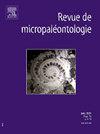Pleistocene ostracods from central and southern Greece: The marine and brackish record
Abstract
Ostracods are important palaeoenvironmental tools and for this reason the study of their palaeoecology and geographic distribution must be enhanced in the frame of a unified geographic approach. The PLOSTRAC’s project (Study of Pleistocene ostracods from central and southern Greece: Digital imaging of a palaeoenvironmental tool) main aim is to study the Pleistocene ostracods deriving from sedimentary successions from central and southern Greece and provide a bibliographic database of Pleistocene ostracod-bearing sequences in the study area accompanied by SEM pictures of the identified species. This output can be used as a reference point for future studies not only in Greece but also in the Eastern Mediterranean region as well. This work presents new data from brackish and marine Pleistocene sequences in Peloponnesus, the Ionian Islands (Zakynthos and Cephalonia) and Crete. A total number of 166 taxa were identified from the processed samples. The ostracods belong mainly to the families Trachyleberididae and Hemicytheridae. The studied sedimentary sequences cover the entire Pleistocene Age and range between purely brackish to deep marine assemblages. Moreover, according to both the palaeoenvironmental interpretation of the studied sections and the published literature, across Northern Peloponnesus during the Pleistocene mostly brackish to shallow marine conditions prevailed. Moving to the south and also to the Ionian Islands and Crete deep marine palaeoenvironments were observed.

 求助内容:
求助内容: 应助结果提醒方式:
应助结果提醒方式:


